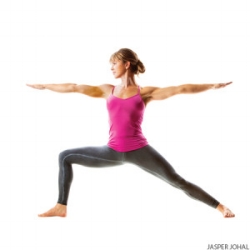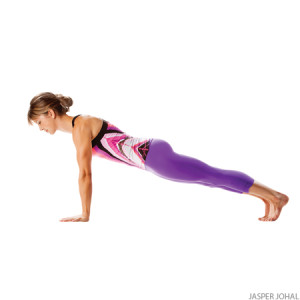Maintain, Prevent, Repair & Restore... Stay limber and strong with these three easy practices
It’s easy to forget that bones are living tissue, constantly being dissolved and rebuilt in a natural cycle. So, while statistics around bone health are quite staggering, the good news is that we can have an impact on maintenance and repair at any age.
Our bones are comprised of both minerals (like the obvious calcium) and a “gelatin matrix” of water and collagen. They appear solid, but, like bamboo, are healthiest when they are strong and but flexible, pliant and moist.
Surprise surprise: Yoga is one of the most effective practices for bone health.
There have been many studies published over the last few years that show yoga can not only slow bone density loss, but can in-fact increase bone mineral density.
In short, the three yogic practices below can help maintain bone health starting from a young age, slow or prevent density loss, and even boost bone density, restoring strength and elasticity.
Research has recently shown that 72-seconds is an ideal time to hold a yoga posture for maximum benefit. But no worries if this is too long, yoga is a practice so work at your capabilities and gradually over time you might find your endurance increasing.
As you practice these asanas, listen to your body’s signals and work to your edge but not past it. Uncomfortable strain on joints should signal you to back off.
1. Take the Path of Most Resistance
Weight-bearing yoga postures put the right kind of “stress” on the bones: enough to stimulate cellular production, but not too much that the bones break or fracture. Resisting gravity’s pull and supporting our body weight stimulates our bones isometrically, signaling the bones to build up their mass in answer to the challenge.
Warrior I & II
These powerful standing postures activate the largest bones of the legs and arms, plus the ankle, knee and shoulder joints.
Low Cobra
Bhujangasana is an active back bend that supports spine health, lengthening vertebrae and keeping them supple and limber.
Plank
Resisting gravity in this shape strengthens wrists and builds core strength to support the spine.
2. Strike a Good Balance
The WHO estimates one in three women over 50 — and one in five men — will suffer from an osteoporotic fracture. Many bone injuries are caused by falling, and we’re not just talking about a serious fall. Even a little roll of the ankle off the curb (or from teetering on a pair of stillettos) can cause a fracture. Maintaining our balance as we age is a huge piece of preventing injury.
Vrkshasana
Tree pose is one of the simplest standing balancing postures to practice, yet has a powerful effect on developing balance and equilibrium. Best of all, it offers many different modifications suitable for all ages and levels.
3. Make an Impact, Safely
There has been so much research done about various exercises that support bone health, and one that remains ahead of the pack is high-impact movements. The New York Times goes so far as to suggest simply jumping up and down!
Shaking Qi Gong
This simple Eastern exercise delivers many of the same benefits of jumping or running, and many more. Best of all, it decreases the intensity of contact, making it safer for those with fragile knees or limited capacity for cardio-vascular workouts.
Check out the video below that explains and demonstrates this easy movement. This is also a fun practice to do with your children!
Additional Food & Lifestyle Tips for Bone Health
- *Boost your intake of calcium-rich plants like Kale & Spinach
- *Reduce or eliminate processed sugars from your diet – these sugars leach calcium from the bones and contribute to loss in bone density
- * Stay moist – incorporate Abhyanga into your routine
- *If you suffer from severe symptoms of Osteoperosis, check out this great yoga sequence created just for you – with modifications for all levels.
- * When beginning any new type of exercise, always consult your primary care doctor, especially if dealing with acute physical problems.





